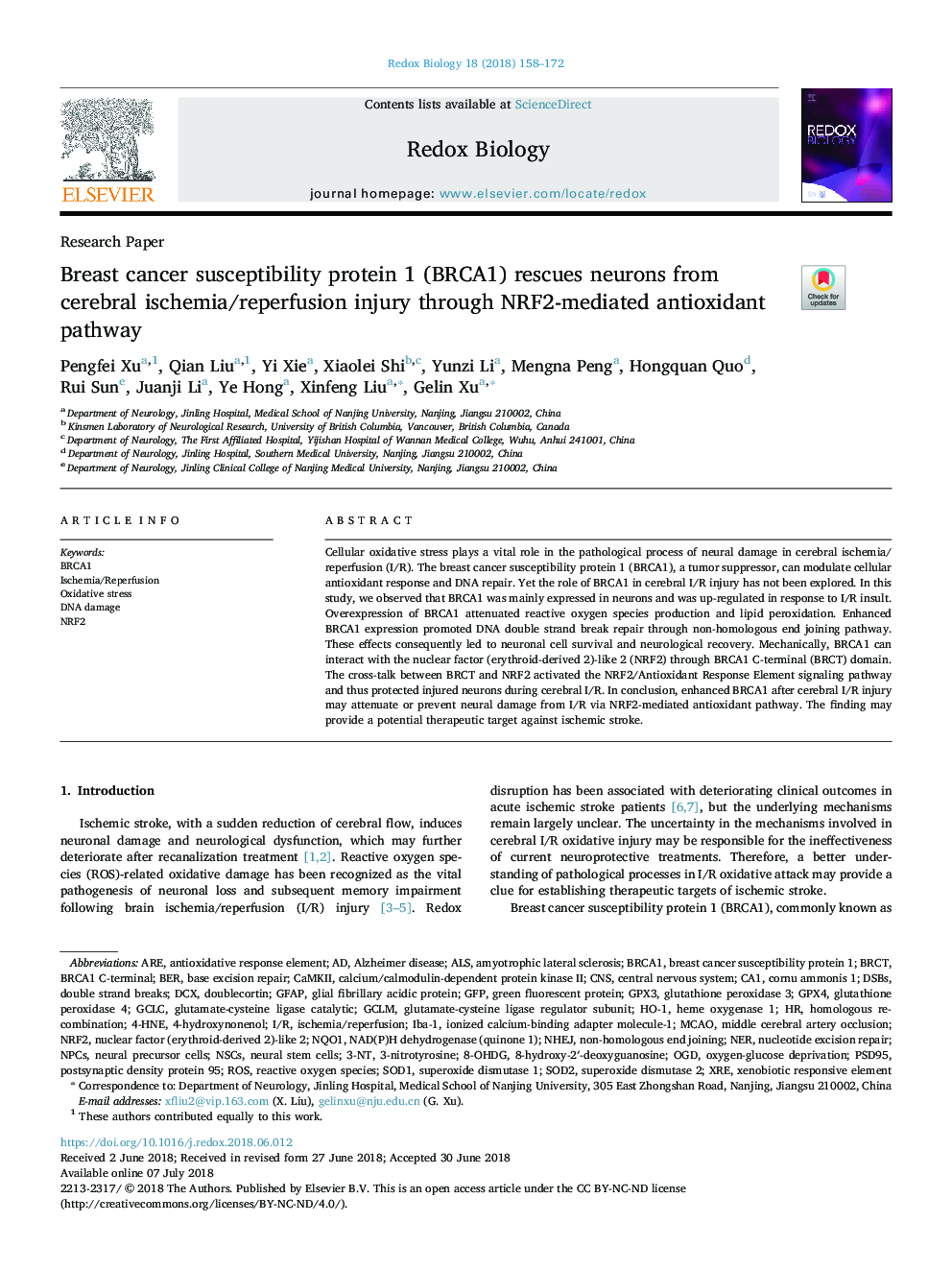| Article ID | Journal | Published Year | Pages | File Type |
|---|---|---|---|---|
| 8286330 | Redox Biology | 2018 | 15 Pages |
Abstract
Cellular oxidative stress plays a vital role in the pathological process of neural damage in cerebral ischemia/reperfusion (I/R). The breast cancer susceptibility protein 1 (BRCA1), a tumor suppressor, can modulate cellular antioxidant response and DNA repair. Yet the role of BRCA1 in cerebral I/R injury has not been explored. In this study, we observed that BRCA1 was mainly expressed in neurons and was up-regulated in response to I/R insult. Overexpression of BRCA1 attenuated reactive oxygen species production and lipid peroxidation. Enhanced BRCA1 expression promoted DNA double strand break repair through non-homologous end joining pathway. These effects consequently led to neuronal cell survival and neurological recovery. Mechanically, BRCA1 can interact with the nuclear factor (erythroid-derived 2)-like 2 (NRF2) through BRCA1 C-terminal (BRCT) domain. The cross-talk between BRCT and NRF2 activated the NRF2/Antioxidant Response Element signaling pathway and thus protected injured neurons during cerebral I/R. In conclusion, enhanced BRCA1 after cerebral I/R injury may attenuate or prevent neural damage from I/R via NRF2-mediated antioxidant pathway. The finding may provide a potential therapeutic target against ischemic stroke.
Keywords
CA1BRCA1 C-terminalGPX3GPx4BRCTGCLMGCLCDSBsDcxCaMKIIBERGFPGFAPcornu Ammonis 1amyotrophic lateral sclerosisAlzheimer diseaseALSbase excision repairCNSdoublecortincentral nervous systemdouble strand breaksAREGlial fibrillary acidic proteingreen fluorescent proteincalcium/calmodulin-dependent protein kinase IIBRCA1Glutathione peroxidase 3glutathione peroxidase 4
Related Topics
Life Sciences
Biochemistry, Genetics and Molecular Biology
Ageing
Authors
Pengfei Xu, Qian Liu, Yi Xie, Xiaolei Shi, Yunzi Li, Mengna Peng, Hongquan Guo, Rui Sun, Juanji Li, Ye Hong, Xinfeng Liu, Gelin Xu,
